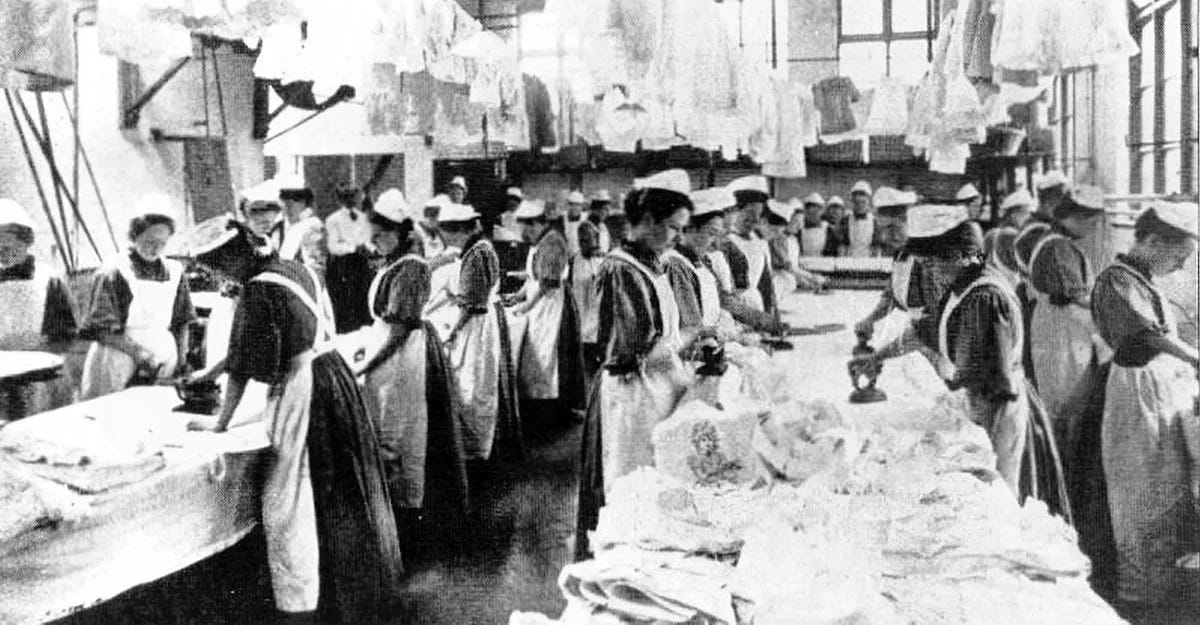The Catholic Church in Ireland Destroyed Thousands of Women in the Name of Purity
Some of the worst crimes committed in Ireland, remain unknown outside the island.
They were called fallen. Some were unmarried mothers. Some were poor. Some were too pretty. Others simply spoke too freely, resisted too much, or had nowhere else to go. The Catholic Church in Ireland labeled them all as impure and sentenced them to a living punishment inside the Magdalene Laundries.
From the eighteenth century through to the late twentieth, Ireland operated a network of institutions where women were confined, often for life, without trial or due process. Run by Catholic nuns with the sanction of the Irish state, the Magdalene Laundries were supposed to be places of redemption. In truth, they were sites of slavery, humiliation, and dehumanization.
Behind convent walls, these women, many of them still girls, were stripped of their names, dressed in uniforms, and forced into silence. Their labor powered the Church’s laundries, generating income for religious orders that grew wealthy on state subsidies and unpaid work. They washed the sheets of hotels, hospitals, and wealthy families. In return, they were denied wages, education, and even the right to leave.
Many never saw the outside world again.
Some died in childbirth, in isolation, having been made pregnant through rape or coercion. Others died from untreated illnesses, or simply from despair. They were buried in unmarked graves, their deaths undocumented. In 1993, a mass grave was discovered on the site of a former laundry in Dublin. One hundred and fifty-five women’s remains were found. It was a moment of national reckoning, or should have been.
The Church did not act alone. Irish society conspired in silence. Families handed their daughters over. The state funded the laundries, referred women to them, and gave them legal cover. The police returned escapees. Doctors looked away. Schools taught girls to fear becoming one of those women.
This was not some medieval cruelty. The last laundry did not close until 1996.
The stories of survivors are harrowing. Women were locked away for stealing a penny bar. For being raped. For having a child. For being in the wrong place at the wrong time. Many were subjected to physical abuse, beaten for minor disobedience, forced to kneel in prayer for hours, or locked in cold cells as punishment. Their hair was shorn. Their letters were read and censored. Some were never allowed to write at all. For countless women, the years inside became a blur of monotonous labor, ritual humiliation, and the gnawing loneliness of abandonment.
Outside, life moved on. Decades passed while politicians, clergy, and neighbors denied or minimized the truth. When survivors spoke, they were dismissed as bitter or unreliable, told to forgive and forget for the good of the Church, for the good of Ireland. Compensation came slowly, grudgingly, with apologies carefully worded to avoid real blame. Religious orders refused to release records or open their finances. The state’s official reports, when they came, were thorough but bloodless. No criminal prosecutions followed. Not a single nun was held accountable.
To this day, many survivors wait for justice, for recognition, for the simple dignity of their own names returned. The Magdalene Laundries are part of the architecture of Irish memory: a structure of shame, secrecy, and complicity. The laundries are gone, but the scars remain—in families, in public trust, and in the bones beneath the city.
We call these women “fallen” as if they tripped. In truth, they were pushed. And the nation that watched, that helped, or that turned away, still owes them more than words.



